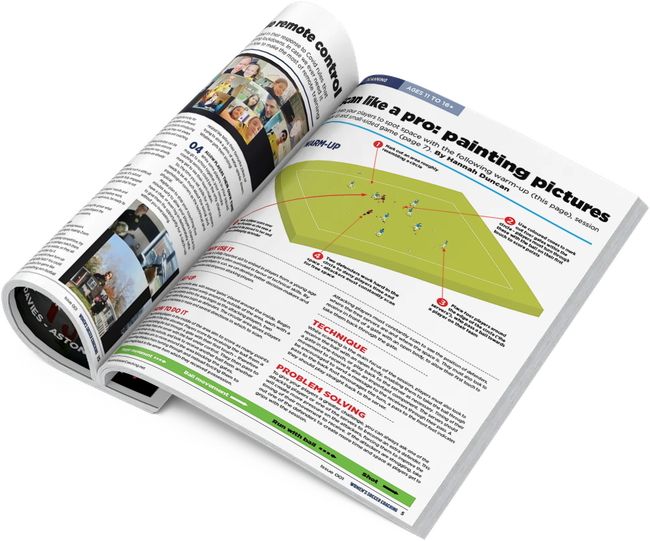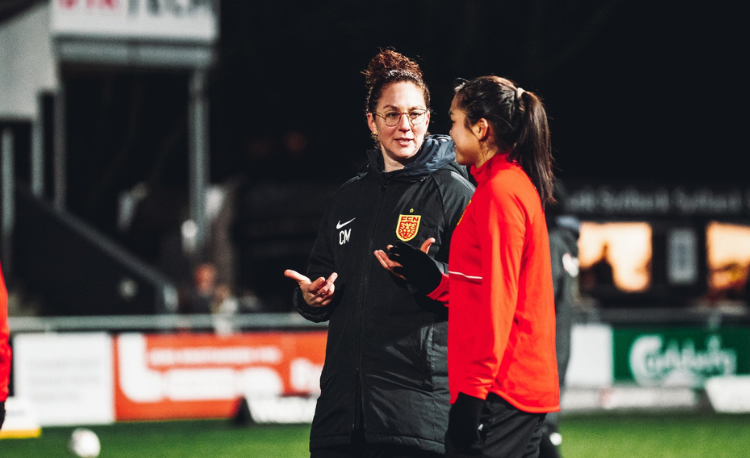You are viewing
1 of your 3 free articles
Coach your players' transition decisions
Good judgement at the moment of regaining possession is something that can be worked on. Alex Burt describes the three ’building blocks’ to teaching it...
In an average game of elite-level soccer, according to a 2014 study, a team will regain possession of the ball about 100 times.
However, as coaches, do we train our players well enough in how to make better decisions in transition? Do players even know what their options are when they regain the ball? The short answer to both questions is probably no.
The truth is, making the right decision in the moment of regain is one of the most difficult skills in soccer - for two reasons:
Firstly, you must transition from an emotion-defensive state of intensity and aggression to an emotional state of composure and awareness, and, secondly, you have fewer immediate passing options as your team are in defensive positions.
Even the best players and teams in the world struggle to make the right decision in transition.
For example, in the 2019 Women’s World Cup final, there were 89 open-play interceptions and ball recoveries - but on 55% of occasions the team that regained the ball lost it immediately without making a successful pass.
"As with any skill, it is possible to improve decision-making through coaching..."
Nevertheless, as with any skill, it is possible to improve this decision-making through good coaching.
To do this, I use a training model of the following three building blocks to improve my player’s decision-making in the moment of regain: know your options, see your options and select the best option.
Building block 1: Know your options
The first building block is to make sure players know what their options are when they are about to recover the ball.
Generally, a player’s first ball contact will be used to control the ball, make a first-time pass, or clear it away. Therefore, the coach’s first step is to firmly cement these three options into the players’ minds.
Make sure you regularly check for understanding by asking them the question: "What are your options when you are about to intercept the ball?". If they reply with "clear it", "control it" or "pass it", you know the first building block is stable and secure.
Related Files

Building block 2: See your options
The second building block is to make sure players are aware of what their actual options are every time they are about to intercept the ball.
During my time at AFC Bournemouth, senior coaches Dan Carroll and Bruce Suraci would often say to their defensive players ‘ball, man, mate, space’ - this was to encourage players to have total awareness of the opponents, teammates and space around them.
This not only helped their defensive positioning but helped them make the best decision as soon as they regained the ball.
For instance, only by being aware of their teammates’ locations were they able to see if it was possible to make a first-time pass - and only by being aware of how much space they had around them, were they able to see if it was possible to control the ball safely.
You can check the levels of awareness your players have through observation and questioning.
For example, if the ball is on the right side of the pitch, observe your left-sided players. Are they focused only on the ball? Or are their eyes also scanning for teammates and opponents?
Alternatively, immediately after your player regains the ball and releases it, ask her "what options did you see?".
If she is able to recall what she saw with good detail (e.g., "I knew I didn’t have space to control the ball because there was an opponent near me"), you know her awareness is of good quality and building block two is secure.
Building block 3: Select the best option
To help your players select the best option, you need to develop a schema - or set of guidelines and rules - in your players’ minds for when to execute each one.
"You can check your players’ awareness through observation and questions..."
To develop a schema effectively, it is important the guidelines are based on what the player can see and feel.
For example, below are the three guidelines I set my players when they are about to intercept the ball:
1. Control it: when you are confident you can touch the ball into a safe space.
2. Pass it: when you are confident it will successfully reach your teammate.
3. Clear it: when you don’t think it is safe or possible to control or pass it.
These guidelines give the player the ownership and responsibility to decide what to do based on what she sees and feels.
For example, for schema 1 - when to control it - the guideline requires the player to firstly recognise if there is a safe space and then to make a judgment on whether she feels confident to control it into the safe area.
You can assess the thinking process behind the decision after an action by asking questions and listening to their reasoning.
For instance, if a player clears the ball and you thought she could have made a first-time pass, you could ask her: "Why did you decide to clear the ball?".
If she says "While I saw a first-time pass to Dani, I wasn’t sure it would be successful and if I mishit the pass, I would have lost the ball in a dangerous space", you can be assured that she probably made the right decision based on what she saw and felt in that moment.
Ultimately, it is for the player to select the best option. All the coach can do is make sure she has a good schema in place to inform her decisions.
Newsletter Sign Up
Newsletter Sign Up
Discover the simple way to become a more effective, more successful soccer coach
In a recent survey 89% of subscribers said Women's Soccer Coaching makes them more confident, 91% said Women's Soccer Coaching makes them a more effective coach and 93% said Women's Soccer Coaching makes them more inspired.
*includes 3 coaching manuals
Get Inspired
All the latest techniques and approaches
Women's Soccer Coaching offers proven and easy to use soccer drills, coaching sessions, practice plans, small-sided games, warm-ups, training tips and advice.
We've been at the cutting edge of soccer coaching since we launched Soccer Coach Weekly in 2007, creating resources for the grassroots youth coach, following best practice from around the world and insights from the professional game.







